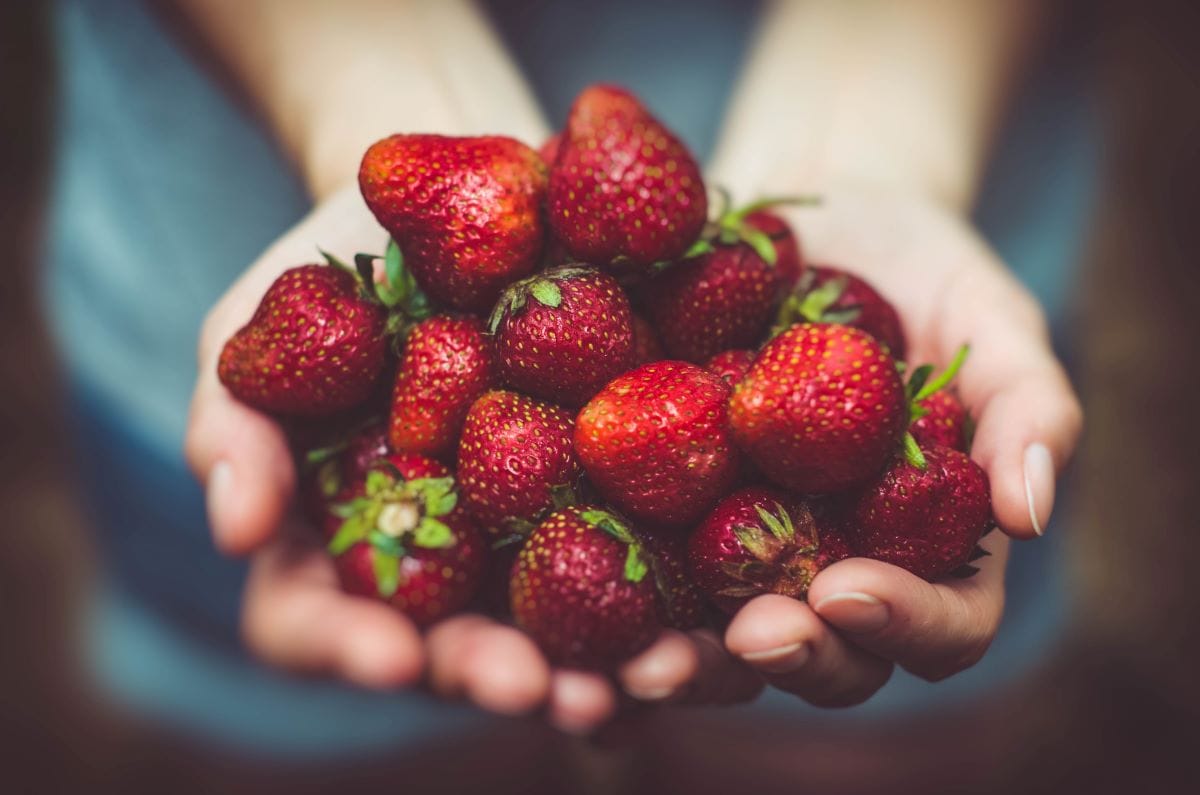Home Food Preservation Methods
In a world where freshness is often compromised for convenience, the importance of preserving food cannot be overstated. Many methods of food preservation are much more than practicality—they are key players in ensuring food security, minimizing waste, and maintaining a diverse and sustainable diet.
When it comes to food preservation, especially at home, two main contenders take the stage: Dehydrators and Freeze Dryers. Before we get into how each one works, let’s establish a foundational understanding of each. Whether you’re a home cook, a backpacker, or just someone intrigued by the science of food, this exploration promises valuable insights.

Food Dehydrators: An Affordable Way to Preserve Food At Home
Explanation of the Dehydration Process
Let’s start with the art of dehydration. This process involves removing moisture from food, a key step in halting the growth of microorganisms that cause food to spoil. Done right, this method transforms fruits and vegetables, herbs, and meats into shelf-stable delights.
Pros and Cons of Using a Food Dehydrator
Understanding the advantages and considerations when choosing the right machine for you is essential. From space-saving designs to concerns about food quality and the degradation of food, we’ll navigate the pros and cons to help you decide if the dehydrator is the culinary companion your kitchen needs.
(We’ll dig into specific pros and cons below!)
Top Dehydrator Brands
Excalibur Food Dehydrators
Excalibur, a prominent player in the dehydrator arena, offers a range of machines equipped with features designed to elevate the dehydration process. But they aren’t cheap.
Features and Technology:
- Even Drying Technology: Excalibur dehydrators are renowned for their even drying technology, ensuring uniform drying across all trays. This feature eliminates the need for constant tray rotation, saving time and effort.
- Adjustable Thermostat: Precision in dehydration is a hallmark of Excalibur dehydrators. The adjustable thermostat allows users to set specific temperatures, accommodating a variety of modern foods and ensuring optimal results.
- Ample Drying Space: With a focus on efficiency, Excalibur dehydrators come with ample drying space, allowing users to process large quantities of food simultaneously. This is especially beneficial for those with bountiful harvests or batch dehydrating.
Customer Reviews: Users often praise the consistent results, user-friendly features, and durability of these Excalibur appliances.
Nesco Food Dehydrators
Nesco, a trusted name in kitchen appliances, brings a line of dehydrators that combine simplicity with efficiency, catering to both beginners and seasoned preservation enthusiasts.
Notable Features:
- Patented Converga-Flow Technology: Nesco’s dehydrators feature Converga-Flow technology, ensuring that hot air is forced horizontally across each tray. This results in fast, even drying to keep your food from spoiling, without the risk of flavor mixing.
- Expandable System: Nesco understands the varying needs of users, and their dehydrating appliances often come with an expandable system. This feature allows users to start with a smaller unit and add trays as needed, providing flexibility in dehydration volume.
- Adjustable Temperature Control: Precise control over the dehydration process is a highlight of Nesco dehydrators. The adjustable temperature control accommodates different types of foods, from delicate dried herbs to hearty meats.
User Experiences: Users appreciate the simplicity of operation, the versatility of the expandable system, and the reliability of Nesco.
Tribest Sedona Food Dehydrators
Tribest Sedona enters the dehydrator scene with a focus on advanced technology and user convenience, making it a standout choice for those seeking a seamless dehydration experience.
Key Features:
- Two-Stage Sequential Temperature-Timer (TST): Tribest Sedona dehydrators feature TST, allowing users to set a higher initial temperature for fast drying, followed by a lower temperature for completion. This ensures an optimal balance between efficiency and preservation.
- Overheat Protection: Safety is a part of the food preservation process with built-in overheat protection. This feature safeguards both the dehydrator and the texture of the food.
- Stainless Steel Trays: Emphasizing durability and hygiene, Tribest Sedonas come with stainless steel trays. These trays not only resist corrosion but also enhance the overall cleanliness of the dehydration process.
User Experiences: Users often highlight the advanced features, thoughtful design, and reliability of Tribest Sedona.

Freeze Dryers: The Long-term Food Storage Processing Method
Understanding the Freeze-Drying Process
In the subzero journey of freeze-drying, water in the food is removed through a different process. Freeze-drying involves freezing food and then removing the ice through sublimation, preserving both structure and nutrients.
Pros and Cons of Using a Freeze Dryer
When it comes to freeze dryers, the advantages and considerations are crucial. There are a few nuanced aspects, from the extended shelf life of food that freeze dryers promise to the potential investment required. We’ll come back to this shortly!
Top Freeze Dryer Brands
Harvest Right Freeze Dryers
Harvest Right takes the lead with an extensive range of freeze dryers designed for both home and industrial use. These units are equipped with cutting-edge technology to bring the power of sublimation to your kitchen.
Features and Benefits:
- Patented Technology: Harvest Right’s freeze dryers boast patented technology that ensures efficient and consistent results. The Precision Control feature allows users to tailor the process to specific types of home food preservation.
- Large Capacity: With a focus on user convenience, Harvest Right offers a large capacity, allowing for substantial quantities of food. This is particularly beneficial for those who prefer to stock up on seasonal produce or create emergency food supplies.
- Home and Pro Models: Harvest Right caters to diverse user needs with both home and professional models. The Home Freeze Dryer is designed for individual households, while the Pro version caters to larger-scale requirements, making it suitable for businesses.
User Testimonials: Users highlight the practicality, efficiency, and reliability of these units and praise the user-friendly interface and the long-term food preservation ability.
Blue Alpine Freeze Dryers
Blue Alpine enters the freeze-drying scene with a commitment to delivering top-notch solutions for both home and commercial users.
Features and Benefits:
- Innovative Drying Technology: Blue Alpine appliances feature innovative drying technology that ensures a gentle and efficient freeze-drying process. This technology preserves the natural flavors and textures of a wide range of foods.
- Compact Design: Recognizing the need for user-friendly appliances, Blue Alpine offers freeze dryers with a compact design, making them suitable for home kitchens with limited space.
- Smart Control System: Blue Alpines are equipped with a smart control system that allows users to customize the drying process based on the specific requirements of real foods. This ensures optimal results for a variety of culinary creations.
User Experiences: Users often highlight the advanced features, thoughtful design, and reliability of Blue Alpine.

Nutritional Value: Dehydrated vs. Freeze Dried Foods
Comparison of Nutrient Retention in Dehydrated Foods
As we dissect the nutritional landscape, we start by examining the impact of dehydration on the vitamins, minerals, and overall nutritional content of foods. Does the dehydrating process result in a significant loss of essential nutrients, or does it offer a surprisingly nutrient-dense alternative to fresh produce?
Analyzing the Nutritional Value of Freeze-Dried Foods
Shifting our focus to freeze-dried foods, we explore how the sublimation process influences the nutritional composition. Does the freeze-drying method manage to preserve a higher percentage of nutrients compared to traditional dehydration?
Get ready for a deep dive into the nutritional science behind both freeze-drying and dehydrating techniques.
Factors Influencing the Nutritional Content in Both Processes
Dehydrated Foods
- Nutrient Retention: Despite the removal of water during dehydration, many nutrients remain surprisingly intact. Vitamins and minerals survive this form of food preservation. With their nutritional profile intact, dehydrated foods remain a healthy way to be able to preserve food.
- Impact on Flavor: Dehydration can intensify the flavor of certain foods as water content decreases. Different foods with different water contents will have varying results. Understanding this flavor concentration adds a sensory dimension to the nutritional discussion.
- Shelf Life vs. Nutrient Preservation: The extended shelf life offered by dehydration comes with questions about nutrient preservation. Because the moisture is removed from foods through dehydration, there is nothing to cause food spoilage.
Freeze-Dried Foods
- Freshness: Freeze-drying fresh food preserves the original texture, color, and taste. The resulting food product is revolutionizing modern food preservation.
- Minimal Nutrient Loss: The sublimation process minimizes nutrient loss compared to traditional methods. While freeze-drying is a relatively new method of preserving food, the lack of heat during food processing means that freeze-dried food retains higher nutritional density.

Pros and Cons: A Food Preserving Comparison
Dehydrators
Advantages
- Cost-Effective: Generally more affordable, making them a budget-friendly option for individuals or families looking to preserve food without a significant upfront investment.
- Energy Efficiency: Use less energy, offering a more energy-efficient solution for those conscious of their environmental impact.
- Texture and Flavor: While there may be some texture changes, dehydration retains a satisfying chewiness and concentrated flavor.
Limitations
- Nutrient Loss: Despite preserving a good portion of nutrients, the dehydration process may result in some nutrient loss, especially in heat-sensitive vitamins.
- Limited Shelf Life: Although having a longer shelf life compared to fresh produce, dehydrated foods might not match the extended shelf life achieved through freeze drying.
- Space Requirements: Appliances can be bulky, requiring sufficient counter or storage space, which might pose challenges for individuals with limited kitchen space.
Freeze Dryers
Advantages
- Optimal Nutrient Preservation: Excel at preserving a high percentage of nutrients, maintaining the nutritional value of foods more effectively than dehydration.
- Long Shelf Life: Minimal risk of spoiled food, boasting an impressive shelf life, often outlasting other preserved foods. This makes them ideal for long-term storage and emergency preparedness.
- Texture and Flavor Retention: The process maintains the original texture, color, and flavor of the food, offering a superior rehydration experience compared to dehydration.
Limitations
- High Initial Cost: Machines tend to be more expensive upfront, which can be a barrier for individuals on a tight budget or those who are unsure about their long-term commitment to food preservation.
- Energy Consumption: They typically use more energy, contributing to higher operating costs and a potentially larger environmental footprint.
- Learning Curve: Operating may involve a steeper learning curve due to its advanced technology. Users may need to familiarize themselves with the settings and processes for optimal results.
Choosing the Right Method Based on Individual Needs
Deciding between freeze-drying vs. dehydrating ultimately boils down to individual preferences, lifestyles, and priorities. Food preservation involves factors such as budget, available space, desired shelf life, and nutrient retention. For those prioritizing cost-effective and energy-efficient preservation with a focus on texture and flavor, a dehydrator might be the ideal choice. On the other hand, if optimal nutrition, long shelf life, and minimal flavor and texture alteration are critical, investing in a freeze dryer could be the answer.
Home Food Preservation You Can Handle
Food preservation has become a way of living for some. Choosing between the two preservation methods includes considering your unique needs, preferences, and circumstances. Before making a choice, remember that both options offer:
- Food safety (no running out!)
- Food all year, if that’s your thing
- Safety from food poisoning (looking at you, unsafe canning methods)
- Options for meat, fruit, and vegetable preservation, and easy food packaging
The landscape of food preservation technologies is continually evolving, offering enthusiasts and everyday cooks alike a range of options to suit their needs. New technologies and methods emerge, providing opportunities for food enthusiasts to experiment, learn, and tailor their preservation techniques to align with their needs.
Embrace the method that aligns with your values, fits your lifestyle, and enhances your culinary pursuits. After all, the joy of preserving food lies not just in the result but in the process.
Find a food to experiment with, and keep exploring and preserving, and savor the fruits of your culinary endeavors!
You might also be interested in…
For more food preservation tips and tricks, check out Daily Mom’s Food N’ Recipes!
CONNECT WITH DAILY MOM
💖 NEWSLETTER: DAILY READS IN YOUR INBOX 💖
Sign up to receive our picks for the best things to do, see and buy so you can relax and focus on more important tasks! Let us help you be the best version of yourself you can be!
BE SOCIAL WITH US
📌 LOVE IT? PIN IT!📌

Photo Credits: Photo by Janine Meuche on Unsplash, Photo by Artur Rutkowski on Unsplash, Photo by Khamkhor on Unsplash, Photo by Maria Molinero on Unsplash, Photo by Kelly Sikkema on Unsplash











































